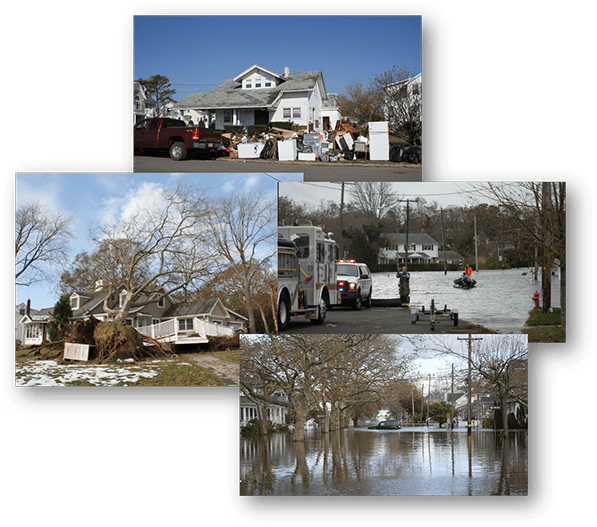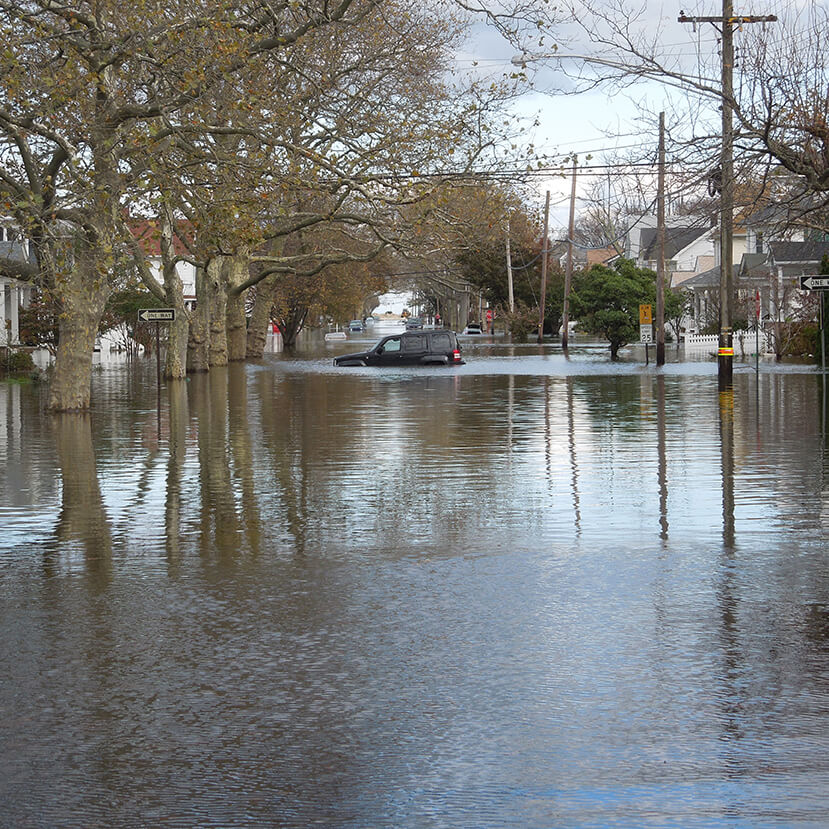The Oct. 28 “Documenting and Interpreting Superstorm Sandy” virtual panel explored some of the ways the disaster is being documented for the historical record and interpreted for the public — adding to our understanding not just of Sandy as a historic event, but contributing to conversations on themes including coastal resilience, climate change, environmental justice, public/private partnerships, and emergency preparedness.
Panelists

Professor Karen Bright, MFA: Department of Art and Design, Monmouth University. In 2019, Professor Bright created an art exhibition titled Just Beachy/After Sandy. The exhibit, installed in the DiMattio Gallery in Monmouth University’s Rechnitz Hall, was a public participatory art installment that highlighted the effects of Sandy and shared the stories of residents who were impacted.
Molly Graham: Oral Historian, National Oceanic and Atmospheric Administration (NOAA). Molly is the oral historian for NOAA’s Voices Oral History Archives, where she collects, preserves and curates oral histories documenting historical environmental change and its impacts on fisheries, oceans and coasts.
Abigail Perkiss, Ph.D.: Associate Professor of History, Kean University. Perkiss’s new book, Hurricane Sandy on New Jersey’s Forgotten Shore (Cornell University Press, 2022) documents the uneven recovery of Hurricane Sandy along New Jersey’s coastline. This book is an outgrowth of a longitudinal oral history project, developed with Kean undergraduates, to tell the story of the relief and recovery efforts after the storm along the Sandy Hook and Raritan bays.
Moderator: Melissa Ziobro, Specialist Professor of Public History, Monmouth University. Professor Ziobro is the project lead for Tracking Sandy: Monmouth County Remembers, a multi-year effort to document the impacts of Superstorm Sandy in Monmouth County, New Jersey, via oral history collection and exhibits.
The panel was one of four free events offered by Monmouth University to examine the disaster from a wide range of historic, economic and environmental perspectives. The others were:
- The panel event “To Build or Not to Build: That is the Question – Lessons We Haven’t Learned 10 Years After Superstorm Sandy,” on Oct. 27.
- A screening for the documentary film “The Jersey Storm: Sandy in Monmouth County” on Oct. 28 at Monmouth University’s Pollak Theatre.
- The student poster exhibition, “Tracking Sandy: Monmouth County Remembers,” held at the Guggenheim Memorial Library on Oct. 28.

